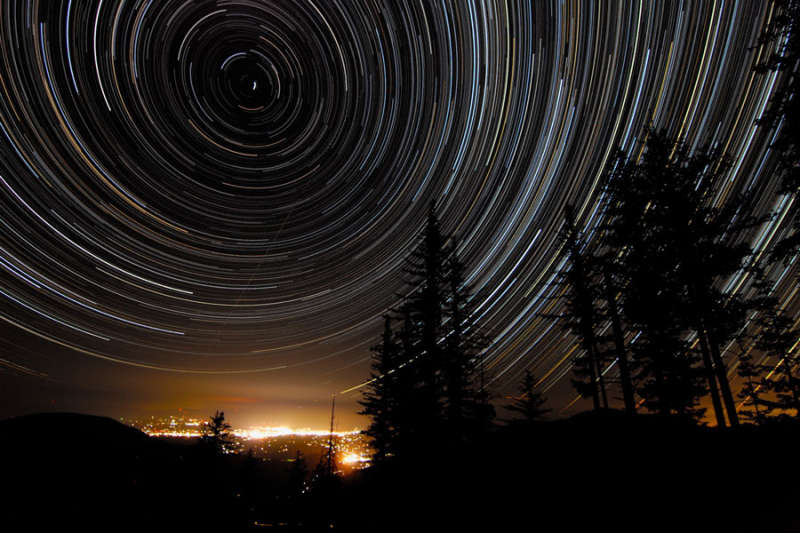Credit & Copyright: Joshua Bury
Explanation:
As the Earth spins on its axis, the sky seems to rotate around us.
This motion, called
diurnal motion,
produces the beautiful concentric
trails
traced by stars during time exposures.
Partial-circle star trails are
pictured above
over Grants Pass,
Oregon,
USA last month.
Near the middle of the circles is the North Celestial Pole (NCP), easily identified as the point in the sky at the
center of all the star trail arcs.
The star Polaris,
commonly known as the
North Star,
made the very short bright circle near the NCP.
About 12,000 years ago, the bright star
Vega was the
North Star,
and in about 14,000 years, as the
Earth's spin axis slowly continues to
precess, Vega will become the
North Star again.
1999 2000 2001 2002 2003 2004 2005 2006 2007 2008 2009 2010 2011 2012 2013 2014 2015 2016 2017 2018 2019 2020 2021 2022 2023 2024 2025 |
Yanvar' Fevral' Mart Aprel' Mai Iyun' Iyul' Avgust Sentyabr' Oktyabr' Noyabr' Dekabr' |
NASA Web Site Statements, Warnings, and Disclaimers
NASA Official: Jay Norris. Specific rights apply.
A service of: LHEA at NASA / GSFC
& Michigan Tech. U.
|
Publikacii s klyuchevymi slovami:
diurnal motion - vrashenie Zemli - sutochnoe vrashenie
Publikacii so slovami: diurnal motion - vrashenie Zemli - sutochnoe vrashenie | |
Sm. takzhe:
Vse publikacii na tu zhe temu >> | |
